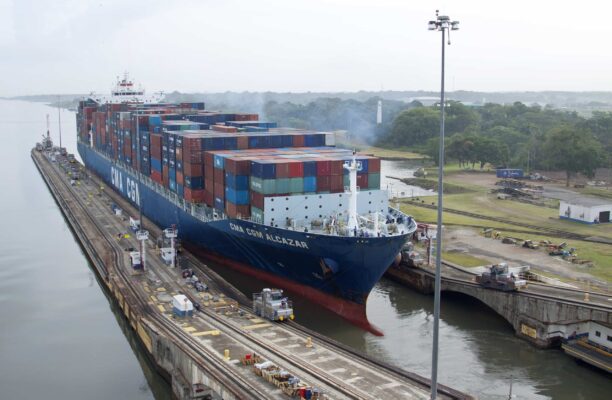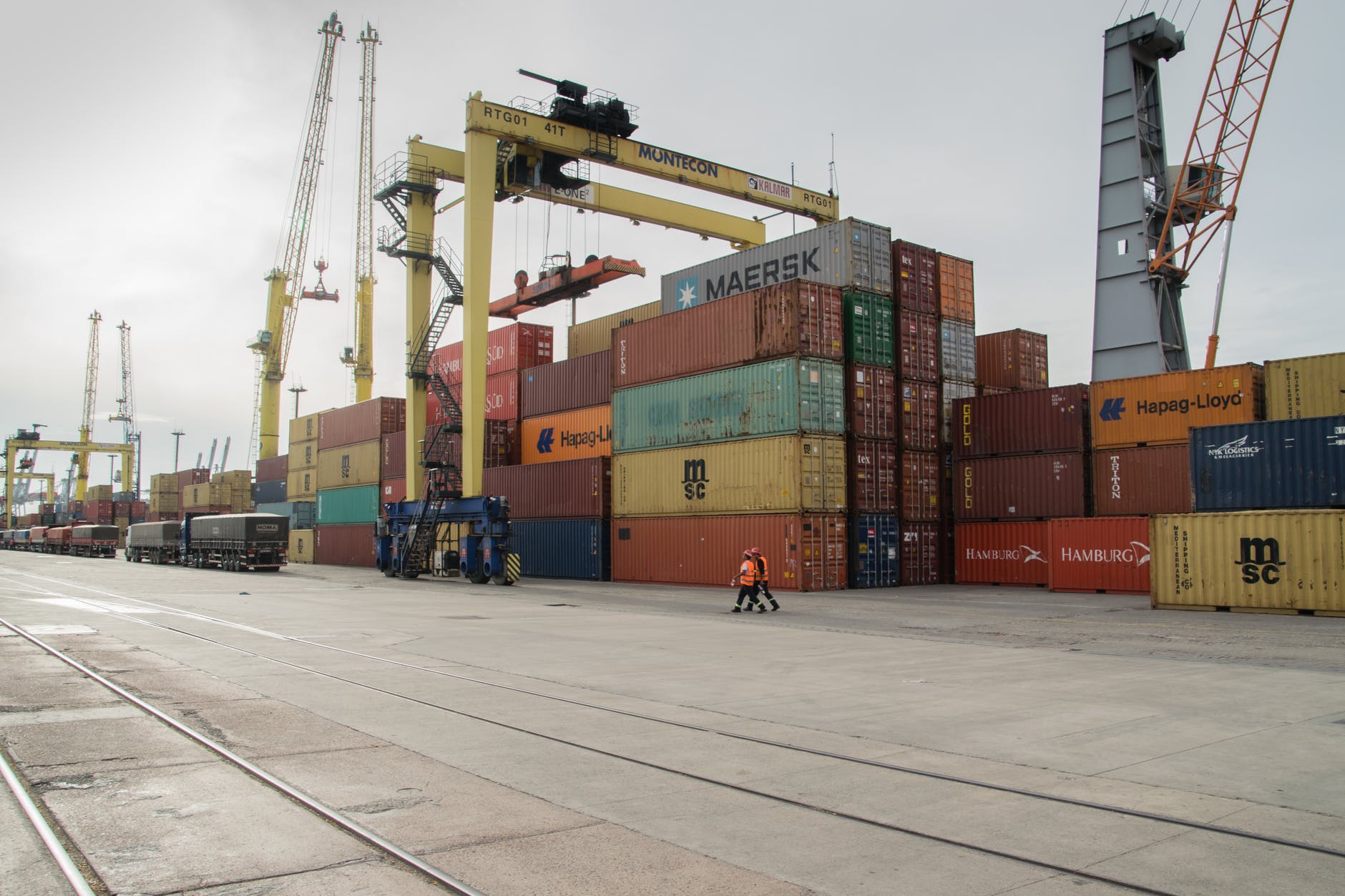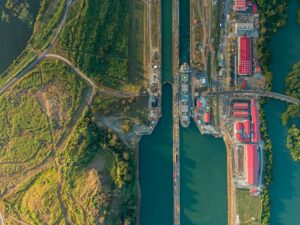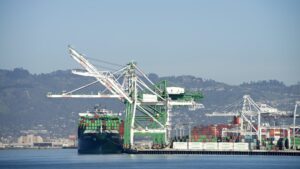Over the past few decades, international commerce has seen technological advancements which allowed an increase in the cargo shipped globally. A recent development was the expansion of the Panama Canal, one of the most significant structures built for maritime trade connecting the Atlantic and Pacific Oceans. Yearly, it is responsible for the transit of over 13000 cargo vessels. Shippers especially felt the canal’s expansion during the COVID crisis, when the amount of freight shipped internationally grew exponentially.
Neopanamax Locks
In April of 2006, the former president of Panama announced the Panama Canal expansion project. Along with deepening current channels and increasing the water levels, the project included adding a third set of locks to the canal. In 2016, builders completed the Neopanamax locks, increasing freight volume moved through. Before 2016, the Panama Canal only had two sets of locks which allowed for a capacity of 5000 TEUs (Twenty Foot Equivalent). The Neopanamax permitted ships with 15000 TEUs to pass through, which meant more ships could go across. Canal Authority predicts that the cargo tonnage moved through the Panama Canal in 2005 will double by 2025.
Covid-19 Shipping Surge and the Panama Canal
When the COVID-19 pandemic started to make its way globally, most of the world’s nations imposed lockdowns. Instead of driving to a local store for merchandise, many goods were purchased online and delivered to the customers. This tread continued to rise even after the lockdowns ended. The number of freight containers shipped internationally increased significantly due to the COVID pandemic. More goods were purchased online and imported from different countries. The increased capability of Panama Canal has proved to be a key component in the context of the shipping surge generated by the pandemic.
One example of this is the transportation of grain exports from the U.S. Grain exports such as corn and soybeans are a common commodity moved through the Panama Canal. The Neopanamax locks allowed vessels to carry 25% more of bulk grain compared to when the canal had two sets of locks. COVID-19 further increased the need to export grains globally through the Panama Canal. In 2020, the value of global wheat exports rose by 10.9% compared to 2019 due to the demand. The Panama Canal’s expansion aided in streamlining the grain exportation. Another example of the positive impact of the Panama Canal’s expansion is the movement of LPG (Liquified Petroleum Gas) carriers to China.
The U.S. LPG exports rose 32% from January-July 2019 to January-July 2020. LPG exports like propane and butane are popular shipments to Asia. This is because China has the highest manufacturing output globally, and factories use LPG in creating polypropylene, a material used to produce plastic. LPG carriers in the U.S use the Panama Canal as the easiest way to reach China. Some other industries that could benefit from the Canal expansion are the automotive and the manufacturing ones, whose products will be more easily moved from the USA to Asia. If you need to have your goods cleared or shipped, contact A1 Worldwide Logistics at 305-821-8995 to begin the process. We have a team of experts ready to help you in the exporting/importing journey from US to China and all around the world.






